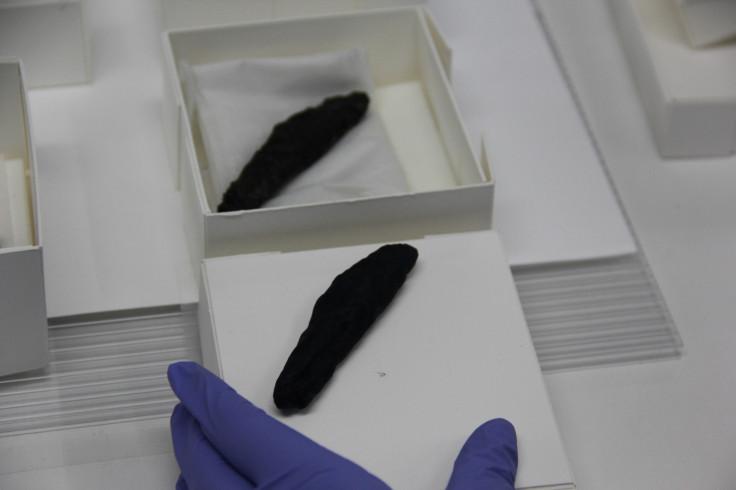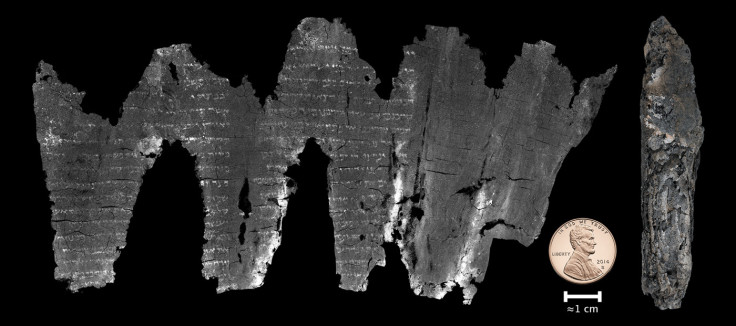En-Gedi scroll: How computer algorithms unlocked the mystery of a 1,400-year-old Hebrew artefact
Google-funded software used to 'unwrap' burnt artefact will be released for free public use in late 2017.
The revolutionary software that was used by Israeli archaeologists to decipher an ancient Hebrew scroll from five charred lumps of animal skin parchment will be released as free open source software for the public to use at the end of 2017, opening a new era in archaeology .
On 21 September, an open access paper entitled "From damage to discovery via virtual unwrapping: Reading the scroll from En-Gedi" by computer scientists from the University of Kentucky, together with archaeologists from the Hebrew University of Jerusalem and the Israel Antiquities Authority, was published in the journal Science Advances, explaining how the team had used computer imaging techniques to read an ancient scroll.
The En-Gedi scroll, which dates back to 600AD, is the oldest Pentateuchal scroll in Hebrew outside of the Dead Sea Scrolls. It was destroyed by a fire while being stored in the En-Gedi Holy Ark. Centuries later, the charred remains of the scroll were found by Israeli archaeologists in 1970, and the parchment was so badly damaged that it had turned into chunks of charcoal that disintegrated when touched, and it was thought that its contents were lost forever.
At the moment, computer imaging software is being used to help preserve legible parchments so that they can continue to enjoyed and studied by multiple generations of people in the future.
But Dr Brent Seales, professor and chair of the University of Kentucky's Department of Computer Science and his team wanted to see if it would be possible to use imaging technologies to go one step further and uncover text written in ink that was now buried beneath layer after layer of charcoal within a scroll of parchment that was rolled when it was burnt.
To this end, they developed a technique called "virtual unwrapping", which enabled them to eventually discover that the scroll contained texts from the Book of Leviticus, which is the third book of the Greek Old Testament of Christian biblical canons.
How does virtual unwrapping work?

Funded by the Google Cultural Institute and the US National Science Foundation, the computer scientists began developing computer algorithms that could process a 3D unstructured volumetric X-ray scan of a damaged manuscript and turn it into a series of flat 2D images showing how the manuscript would look if it were laid out flat.
The researchers scanned the scroll with x-ray-based micro-computed tomography (micro-CT), which is able to image and reveal the fine scale internal structure of objects non-destructively. Micro-CT illuminates the object being scanned, while a planar x-ray detector magnifies images projected from within the object, which are visible to a detector or screen located behind the object.
The object is rotated and hundreds of different angular view images are taken and compiled by the computer, which then creates a stack of virtual cross section slices showing exactly what is inside the object.
The researchers built a computer algorithm that created a triangulated surface mesh that puts all the slices together to form a picture of what it thinks a section of the animal skin parchment should look like.
When all the pieces were put together, it revealed not only the surface detail of the material, but also the cracks and evidence of ink, which contained traces of a metal such as iron or lead, and a computer algorithm was needed to improve the texture of the ink so that it could be distinguished from the rest of the surface of the material.
Even though the researchers were now able to see within the carbonised chunks of animal skins, if you recall, the scroll was rolled up when it was burnt. This means that the text would all be curved, and the slices taken from the X-ray scans would show how the text looked curving around the roll of material, so the computer scientists had to build another algorithm that could flatten the mesh in order to create a level 2D fragment.
Finally, more computer algorithms were required to join all of the various segmented mesh sections together, to create one single 3D surface, whereby every pixel in the final image would translate to a voxel, a unit of graphic information that defines a specific point in three-dimensional space.
Virtual unwrapping could help unlock many ancient secrets

The end result looks just like a regular photograph of a legible manuscript lying flat for inspection. Using these final images, archaeologists from the Hebrew University of Jerusalem and the Israel Antiquities Authority were finally able to read and translate the parchment's contents, as they could see distinctive columns of Hebrew writing containing clearly defined letters, words and lines.
"The traditional approach of removing a folio from its binding—or unrolling a scroll—and pressing it flat to capture an accurate facsimile obviously will not work on fragile manuscripts that have been burned and crushed into lumps of disintegrating charcoal. The virtual unwrapping that we performed on the En-Gedi scroll proves the effectiveness of our software pipeline as a non-invasive alternative: a technological engine for text discovery in the face of profound damage," the researchers concluded in the paper.
"The implemented software components, which are necessary stages in the overall process, will continue to improve with every new object and discovery. However, the separable stages themselves, from volumetric scanning to the unwrapping and merging transformations, will become the guiding framework for practitioners seeking to open damaged textual materials."
© Copyright IBTimes 2025. All rights reserved.






















